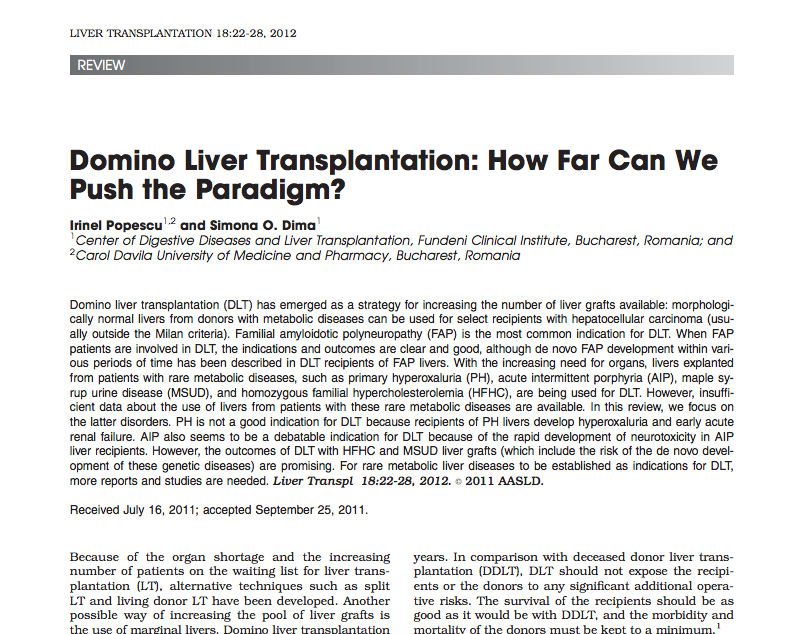Autori:
Prof. Dr. Irinel Popescu, Dr. Simona O. Dima
Center of Digestive Diseases and Liver Transplantation, Fundeni Clinical Institute, Bucharest, Romania
Rezumat:
Domino liver transplantation (DLT) has emerged as a strategy for increasing the number of liver grafts available: morphologically normal livers from donors with metabolic diseases can be used for select recipients with hepatocellular carcinoma (usually outside the Milan criteria). Familial amyloidotic polyneuropathy (FAP) is the most common indication for DLT. When FAP patients are involved in DLT, the indications and outcomes are clear and good, although de novo FAP development within various periods of time has been described in DLT recipients of FAP livers. With the increasing need for organs, livers explanted from patients with rare metabolic diseases, such as primary hyperoxaluria (PH), acute intermittent porphyria (AIP), maple syrup urine disease (MSUD), and homozygous familial hypercholesterolemia (HFHC), are being used for DLT. However, insufficient data about the use of livers from patients with these rare metabolic diseases are available. In this review, we focus on the latter disorders. PH is not a good indication for DLT because recipients of PH livers develop hyperoxaluria and early acute renal failure. AIP also seems to be a debatable indication for DLT because of the rapid development of neurotoxicity in AIP liver recipients. However, the outcomes of DLT with HFHC and MSUD liver grafts (which include the risk of the de novo development of these genetic diseases) are promising. For rare metabolic liver diseases to be established as indications for DLT, more reports and studies are needed. Liver Transpl 18:22-28, 2012. VC 2011 AASLD.
Publicat:
LIVER TRANSPLANTATION 18:22-28, 2012
[gview file=”https://www.chirurgiehbp.ro/wp-content/uploads/2016/08/domino_liver-1.pdf”]

